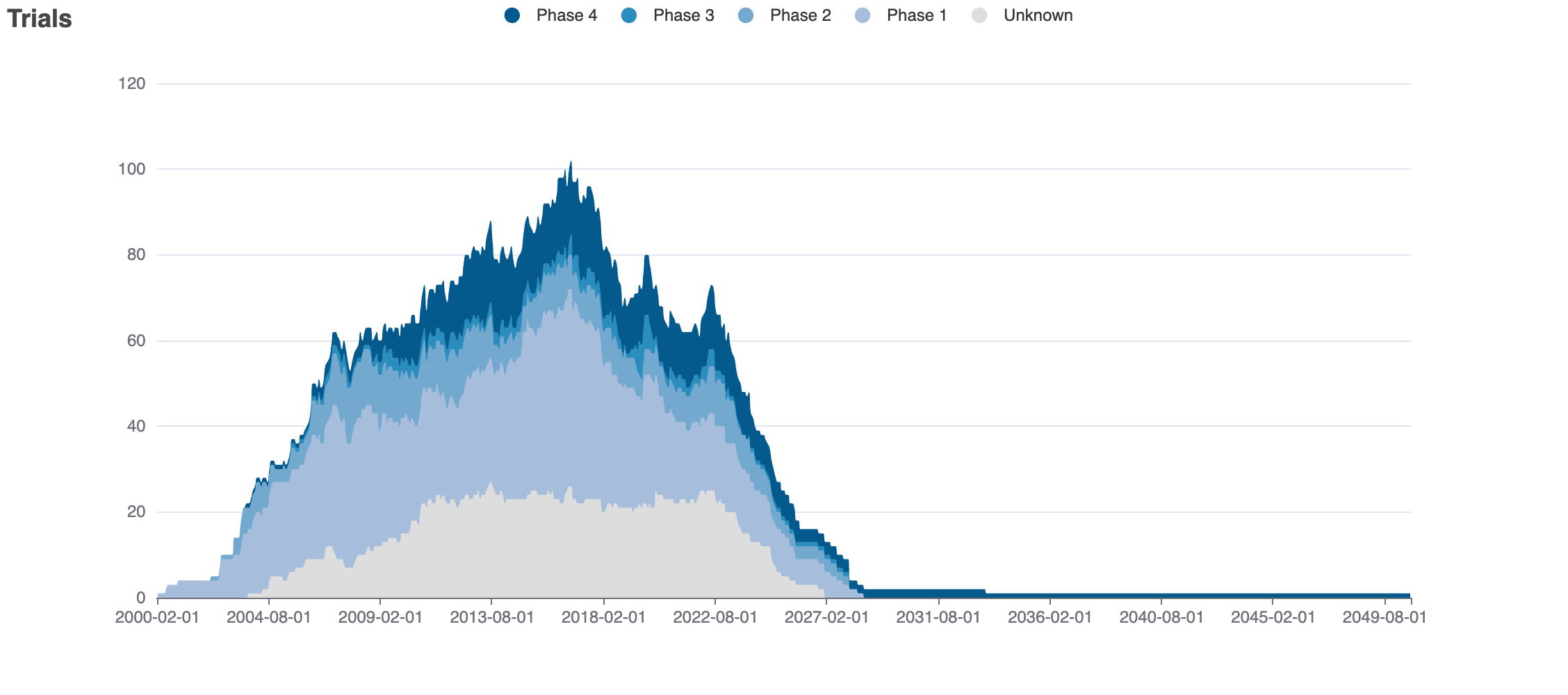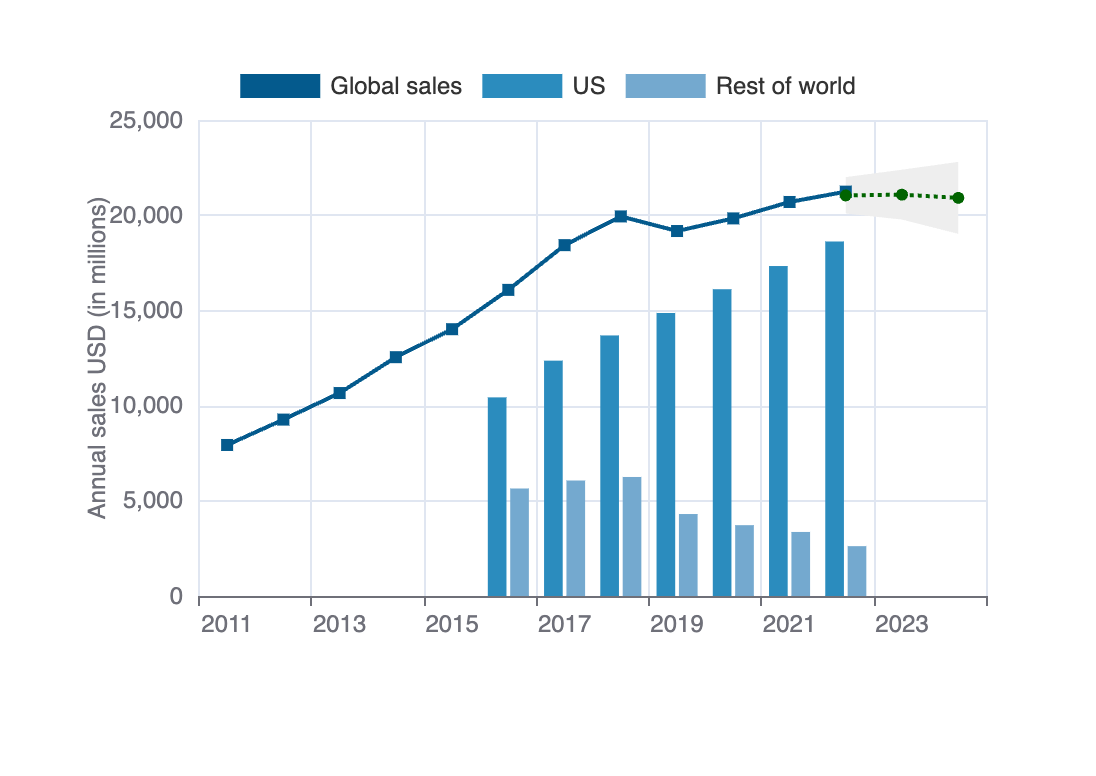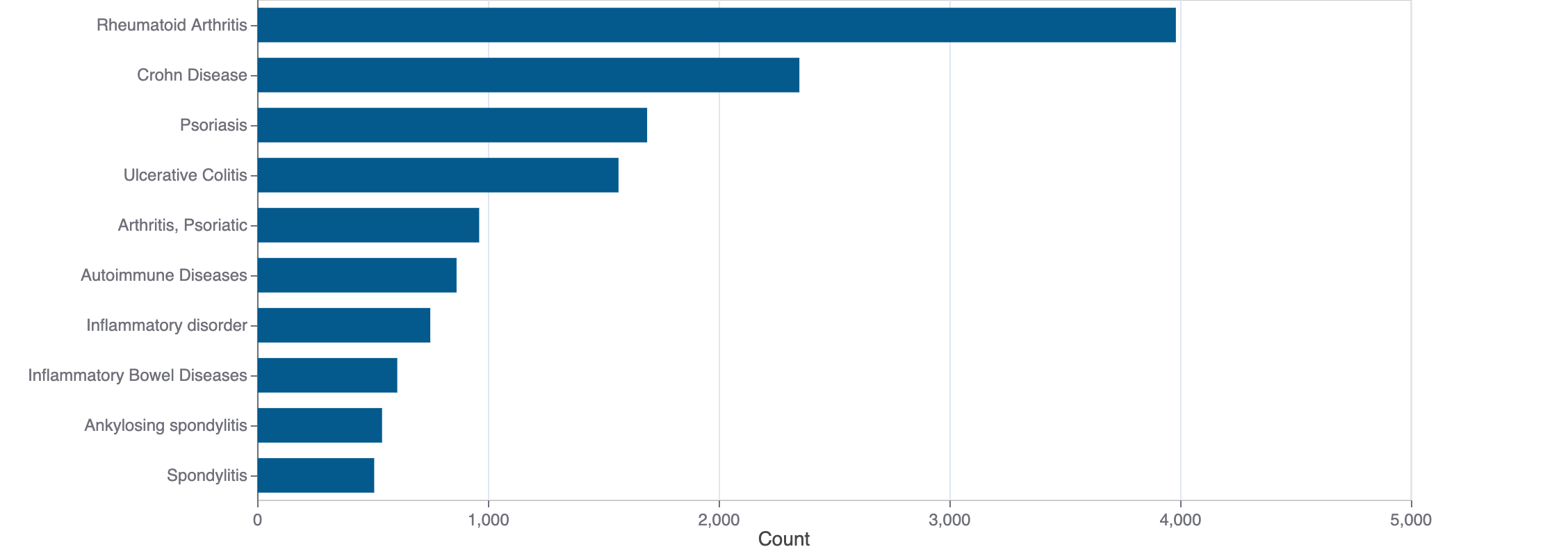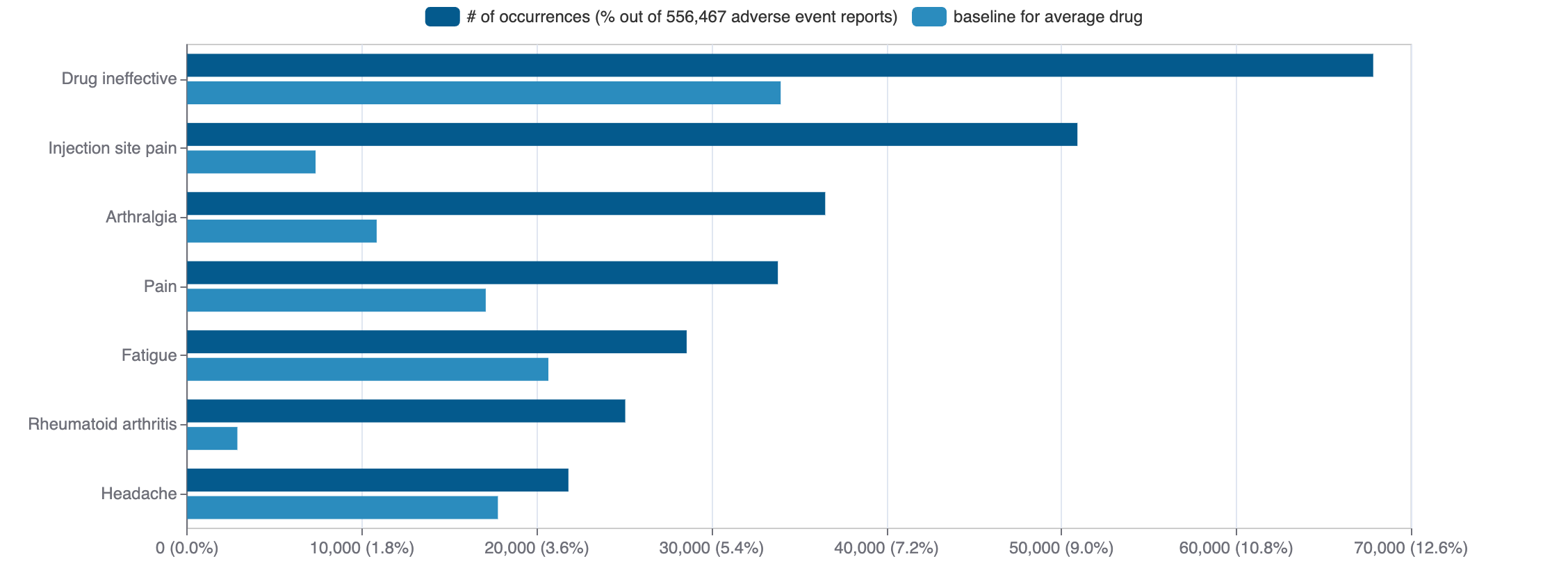Angiomax, Angiox(bivalirudin)
Angiomax, Angiox (bivalirudin) is a protein pharmaceutical. Bivalirudin was first approved as Angiomax on 2000-12-15. It is used to treat unstable angina in the USA. It has been approved in Europe to treat acute coronary syndrome. The pharmaceutical is active against prothrombin.
Download report
Favorite
Events Timeline
Commercial
Clinical
Drug
Target
Variants
Financial
Trends
Safety
Events Timeline
5D
1M
3M
6M
YTD
1Y
2Y
5Y
Max
Events
FDA approval date
EMA approval date
Patent expiration date
Study first post date
Last update post date
Start date
Primary completion date
Completion date
Results first post date

Mock data
Subscribe for the real data
Subscribe for the real data
Commercial
Therapeutic Areas
Therapeutic Area | MeSH |
|---|---|
| cardiovascular diseases | D002318 |
| signs and symptoms pathological conditions | D013568 |
Trade Name
FDA
EMA
Angiomax, Bivalirudin (discontinued: Bivalirudin)
Drug Products
FDA
EMA
New Drug Application (NDA)
New Drug Application (NDA)
Abbreviated New Drug Application (ANDA)
Abbreviated New Drug Application (ANDA)
Bivalirudin
Tradename | Company | Number | Date | Products |
|---|---|---|---|---|
| ANGIOMAX RTU | MAIA Biotechnology | N-211215 RX | 2019-07-25 | 1 products, RLD, RS |
| ANGIOMAX | Sandoz | N-020873 RX | 2000-12-15 | 1 products, RLD, RS |
Show 1 discontinued
Labels
FDA
EMA
Brand Name | Status | Last Update |
|---|---|---|
| bivalirudin | NDA authorized generic | 2025-09-10 |
Indications
FDA
EMA
Indication | Ontology | MeSH | ICD-10 |
|---|---|---|---|
| unstable angina | EFO_1000985 | D000789 | I20.0 |
Agency Specific
FDA
EMA
No data
HCPCS
Code | Description |
|---|---|
| J0583 | Injection, bivalirudin, 1 mg |
Clinical
Clinical Trials
89 clinical trials
View more details

Mock data
Subscribe for the real data
Subscribe for the real data
Indications Phases 4
Indication | MeSH | Ontology | ICD-10 | Ph 1 | Ph 2 | Ph 3 | Ph 4 | Other | Total |
|---|---|---|---|---|---|---|---|---|---|
| Thrombosis | D013927 | — | — | — | 1 | 2 | 1 | — | 4 |
| Syndrome | D013577 | — | — | — | — | 1 | 1 | 1 | 3 |
| Thrombocytopenia | D013921 | HP_0001873 | D69.6 | — | — | 2 | 1 | — | 3 |
| Coronary artery disease | D003324 | — | I25.1 | — | — | — | 1 | 1 | 2 |
| Coronary disease | D003327 | — | — | — | — | — | 1 | — | 1 |
| Myocardial ischemia | D017202 | EFO_1001375 | I20-I25 | — | — | — | 1 | — | 1 |
Indications Phases 3
Indication | MeSH | Ontology | ICD-10 | Ph 1 | Ph 2 | Ph 3 | Ph 4 | Other | Total |
|---|---|---|---|---|---|---|---|---|---|
| Myocardial infarction | D009203 | EFO_0000612 | I21 | — | — | 4 | — | — | 4 |
| Infarction | D007238 | EFO_0009463 | — | — | — | 4 | — | — | 4 |
| Coronary artery bypass | D001026 | EFO_0003776 | — | — | — | 4 | — | — | 4 |
| Acute coronary syndrome | D054058 | EFO_0005672 | — | — | — | 2 | — | 1 | 3 |
| Cardiovascular diseases | D002318 | EFO_0000319 | I98 | — | — | 2 | — | — | 2 |
| Unstable angina | D000789 | EFO_1000985 | I20.0 | — | — | 1 | — | — | 1 |
| Acute disease | D000208 | — | — | — | — | 1 | — | — | 1 |
| Inferior wall myocardial infarction | D056989 | EFO_1000983 | — | — | — | 1 | — | — | 1 |
| Hemorrhage | D006470 | MP_0001914 | R58 | — | — | 1 | — | — | 1 |
| Endovascular procedures | D057510 | — | — | — | — | 1 | — | — | 1 |
Show 4 more
Indications Phases 2
No data
Indications Phases 1
No data
Indications Without Phase
Indication | MeSH | Ontology | ICD-10 | Ph 1 | Ph 2 | Ph 3 | Ph 4 | Other | Total |
|---|---|---|---|---|---|---|---|---|---|
| Stable angina | D060050 | — | I20.89 | — | — | — | — | 1 | 1 |
Epidemiology
Epidemiological information for investigational and approved indications
View more details
Drug
General
| Drug common name | Bivalirudin |
| INN | bivalirudin |
| Description | Bivalirudin is a synthetic peptide of 20 amino acids, comprising D-Phe, Pro, Arg, Pro, Gly, Gly, Gly, Gly, Asn, Gly, Asp, Phe, Glu, Glu, Ile, Pro, Glu, Glu, Tyr, and Leu in sequence. A congener of hirudin (a naturally occurring drug found in the saliva of the medicinal leech), it a specific and reversible inhibitor of thrombin, and is used as an anticoagulant. It has a role as an anticoagulant and an EC 3.4.21.5 (thrombin) inhibitor. |
| Classification | Protein |
| Drug class | anticoagulants (hirudin type) |
| Image (chem structure or protein) |  |
| Structure (InChI/SMILES or Protein Sequence) | CC[C@H](C)[C@H](NC(=O)[C@H](CCC(=O)O)NC(=O)[C@H](CCC(=O)O)NC(=O)[C@H](Cc1ccccc1)NC(=O)[C@H](CC(=O)O)NC(=O)CNC(=O)[C@H](CC(N)=O)NC(=O)CNC(=O)CNC(=O)CNC(=O)CNC(=O)[C@@H]1CCCN1C(=O)[C@H](CCCNC(=N)N)NC(=O)[C@@H]1CCCN1C(=O)[C@H](N)Cc1ccccc1)C(=O)N1CCC[C@H]1C(=O)N[C@@H](CCC(=O)O)C(=O)N[C@@H](CCC(=O)O)C(=O)N[C@@H](Cc1ccc(O)cc1)C(=O)N[C@@H](CC(C)C)C(=O)O |
Identifiers
| PDB | — |
| CAS-ID | 128270-60-0 |
| RxCUI | — |
| ChEMBL ID | CHEMBL2103749 |
| ChEBI ID | 59173 |
| PubChem CID | 16129704 |
| DrugBank | DB00006 |
| UNII ID | TN9BEX005G (ChemIDplus, GSRS) |
Target
Variants
No data
Financial
Revenue by drug
$
€
£
₣
Bivalirudin – The Medicines Company


Mock data
Subscribe for the real data
Subscribe for the real data

Mock data
Subscribe for the real data
Subscribe for the real data
Tabular view
Estimated US medical usage
No data
Trends
PubMed Central
Top Terms for Disease or Syndrome:

Mock data
Subscribe for the real data
Subscribe for the real data
Additional graphs summarizing 4,237 documents
View more details
Safety
Black-box Warning
No Black-box warning
Adverse Events
Top Adverse Reactions

Mock data
Subscribe for the real data
Subscribe for the real data
2,623 adverse events reported
View more details
© 2020-2025 Collaborative Drug Discovery Inc. (CDD) | Terms of Use